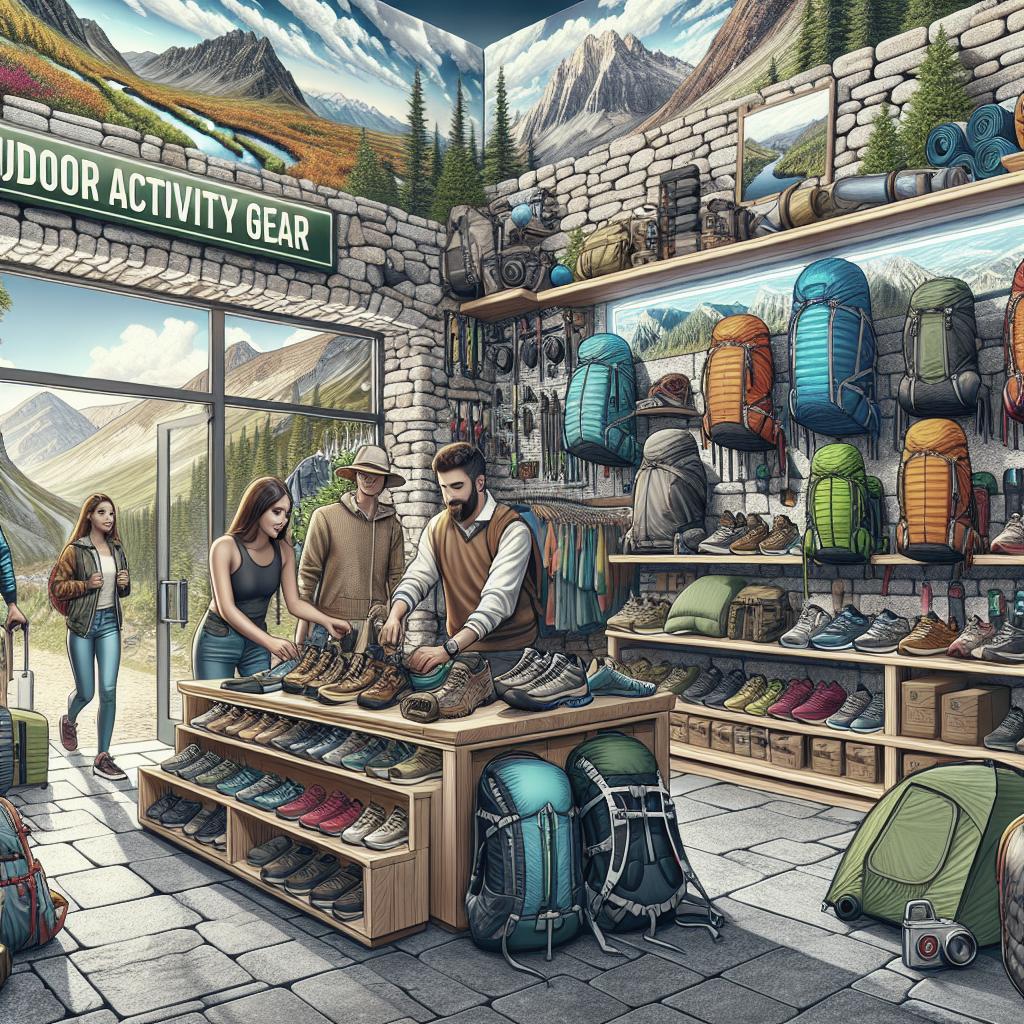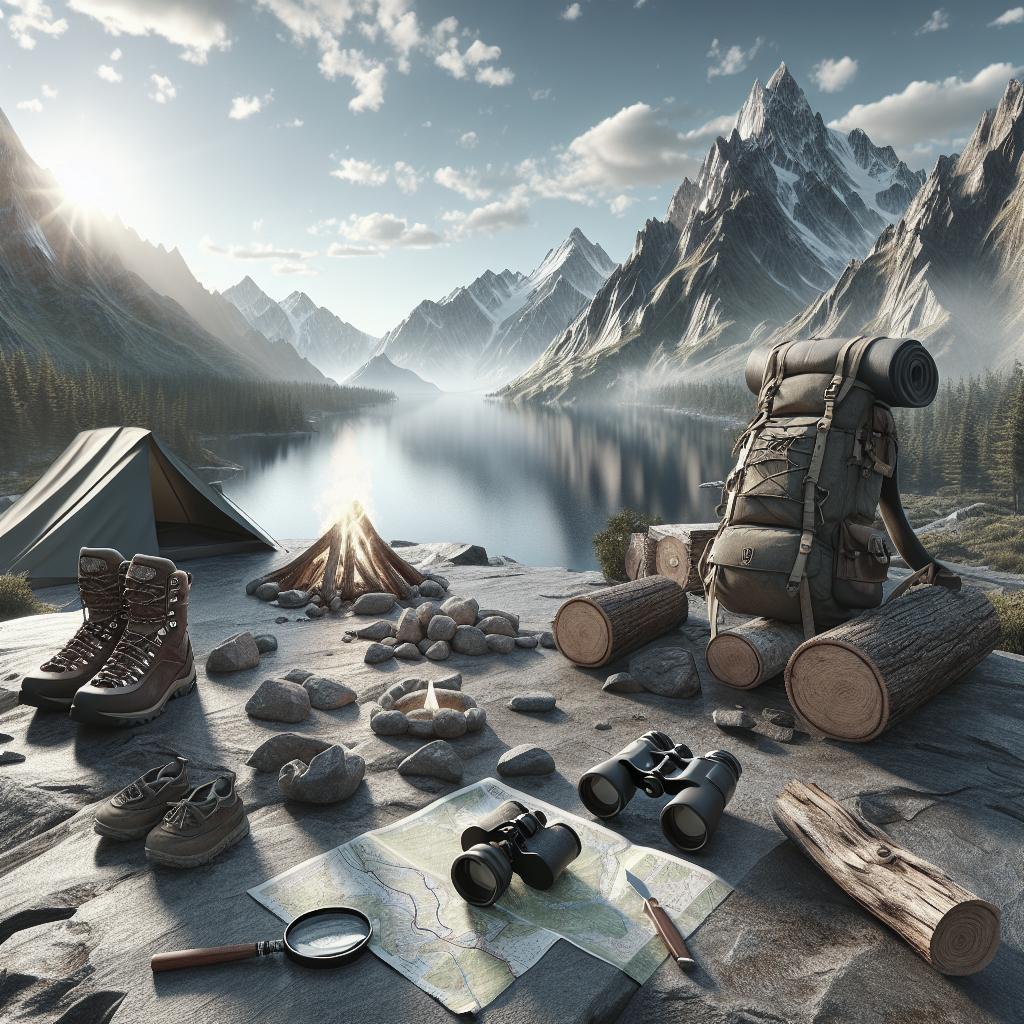< lang="en">
Embarking on a hiking adventure requires careful planning and preparation, and one of the most crucial aspects is choosing the right gear. With the myriad of options available, selecting what meets your specific needs can be daunting. This blog post will guide you through key factors to consider when selecting outdoor gear for hiking, including weight, size, durability, versatility, comfort, and material. Additionally, we will provide insight on where to find quality hiking gear. Whether you’re a novice or a seasoned hiker, these insights will help you make informed choices to enhance your outdoor experience.
WEIGHT
When selecting hiking gear, weight is one of the most critical factors to consider. Carrying heavy equipment can slow you down and make your journey less enjoyable. It’s essential to look for lightweight options, especially for items you’ll carry in your backpack for long periods. Ultralight gear can significantly reduce the overall load, allowing you to hike longer distances without fatigue.
Balancing weight with functionality is important. Often, lighter gear might come at the cost of some features or durability. Ensure the items you choose still meet your essential needs without adding unnecessary weight. Prioritize basic necessities like a lightweight tent, sleeping bag, and cooking equipment that won’t burden your back.
SIZE
Size matters, particularly when it comes to packing and storing your hiking gear. Compact items are easier to fit into your backpack and allow you to carry more essentials without being encumbered. Bulky gear can be unwieldy, making it difficult to maintain balance and stability on challenging trails.
When choosing gear, look for items that can be easily compressed or folded. For instance, inflatable sleeping pads or collapsible cooking pots can save significant space in your backpack. Also, investing in a well-designed backpack with multiple compartments can help you organize your gear efficiently, ensuring everything you need is within reach.
DURABILITY
Durability is key when selecting outdoor gear for hiking. Your equipment must withstand the rigors of the terrain, weather conditions, and frequent use. Investing in high-quality, durable gear can save you from potential failures during your hike and also offer long-term savings.
Look for products with robust reviews and trusted brand reputations. Pay attention to construction details such as reinforced seams, sturdy zippers, and durable materials. Hard-wearing gear, like waterproof jackets and abrasion-resistant boots, can offer greater reliability and protection, ensuring your adventure is safe and comfortable.
VERSATILITY
Versatile gear can enhance your hiking experience by reducing the need for multiple items. Look for equipment that serves more than one purpose or is adaptable to various conditions. For example, a multi-tool can replace several single-purpose items, providing you with essential functions like cutting, opening, or repairing, all in one compact device.
Another consideration is clothing that can be layered to adjust to changing weather conditions. Convertible pants, which can be zipped off into shorts, are a prime example of versatile hiking apparel. Investing in multipurpose gear ensures you’re prepared for diverse situations without overloading your backpack.
COMFORT
Comfort is paramount when you’re out on the trails for extended periods. Ill-fitting gear can cause discomfort, blisters, and even injuries. Prioritize finding hiking boots that offer proper support, cushioning, and a secure fit. It’s recommended to try on footwear with the socks you plan to wear on your hikes and break in new boots before a big trip.
Additionally, consider the comfort features of your backpack. Padded shoulder straps, a supportive hip belt, and proper ventilation can make a significant difference in your comfort level during a hike. Sleeping gear, like your sleeping bag and pad, should also provide insulation, support, and comfort suited to your sleeping preferences and the expected weather conditions.
MATERIAL
The material of your hiking gear plays a crucial role in its performance and durability. Opt for materials that are lightweight, breathable, and resistant to water and abrasions. Common materials include Gore-Tex for waterproof clothing, ripstop nylon for backpacks and tents, and synthetic or down fill for sleeping bags.
Avoid cotton for hiking apparel, as it retains moisture and dries slowly, leading to discomfort and potential hypothermia. Instead, opt for synthetic fabrics or merino wool, which are excellent for moisture-wicking and temperature regulation. The right material choices can enhance your gear’s functionality and longevity, ensuring you are well-prepared for your outdoor adventures.
Now That You Know WHAT to Look for, It Is Helpful to Know WHERE to Look.
Finding the right outdoor gear for hiking requires knowing where to look. Start by visiting specialty outdoor gear retailers, where knowledgeable staff can provide personalized recommendations and allow you to test products in-store. Brands like REI, Patagonia, and The North Face are reputable and offer a wide range of high-quality gear.
Additionally, online resources such as GearLab, Outdoor Gear Exchange, and Backcountry have extensive product reviews and comparisons, helping you make informed decisions from the comfort of your home. Online shopping also often provides access to a broader inventory and competitive pricing.
Don’t overlook second-hand options. Online marketplaces like eBay, as well as local gear swaps and thrift shops, can offer well-maintained, budget-friendly equipment. This is especially useful for beginners who may not yet know their specific preferences and can benefit from purchasing lightly used gear at reduced prices.
Future Prospects
| Factor | Considerations |
|---|---|
| Weight | Choose lightweight gear to reduce fatigue; balance weight with functionality. |
| Size | Select compact items for easier packing and organization; consider compressible and collapsible options. |
| Durability | Invest in high-quality, robust gear; look for reinforced construction and durable materials. |
| Versatility | Opt for multipurpose gear to reduce load; seek adaptable and convertible items like multi-tools and layered clothing. |
| Comfort | Prioritize well-fitting boots and supportive backpacks; ensure sleeping gear suits your comfort and insulation needs. |
| Material | Use lightweight, breathable, water-resistant materials; avoid cotton and choose synthetic fabrics or merino wool. |
| Where to Look | Explore specialty outdoor retailers, reputable online resources, and second-hand marketplaces for quality gear. |


